Whether you're looking to add personality or keep UV light from your vehicle's interior, the various types of window tints can help you.
A dyed window tint is relatively cheap, but you can spend a bank-breaking amount on the highest quality ceramic tints if you have the budget.
Or you can go for the carbon, matte-look finish for a truly stylish aesthetic.
No matter your reason for wanting window tinting, there's a type of tint that'll perfectly suit your tastes.
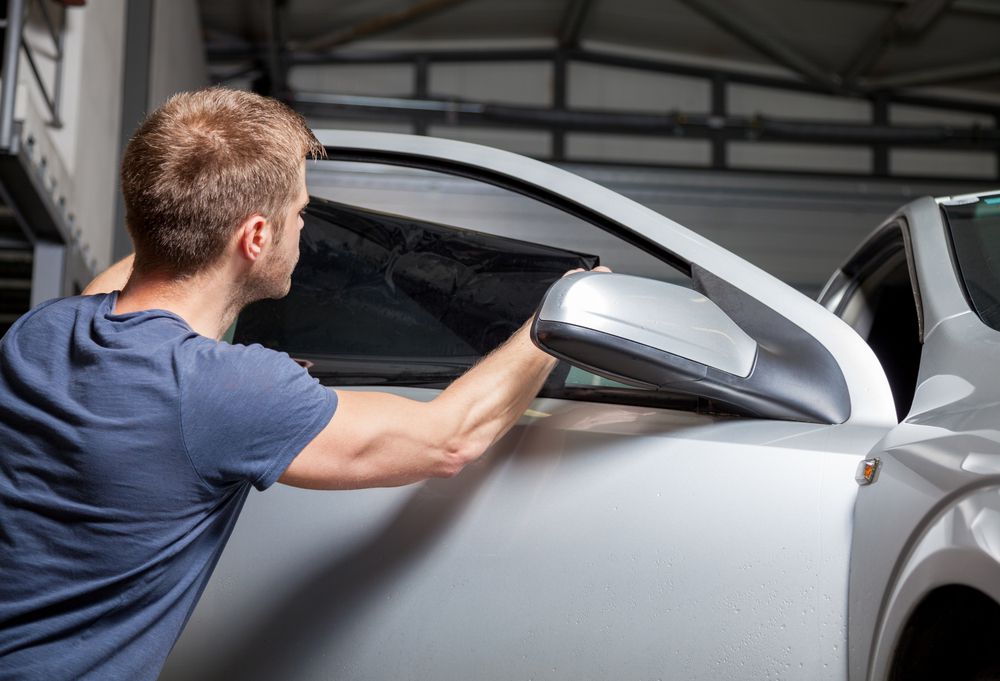 A technician applying window tint to a customer's car.
A technician applying window tint to a customer's car.
What are The Different Tint Types?
From dyed window tint to metalized window tint, there's a whole array to choose from.
And we'd argue it's the best way to add a touch of personalization to your vehicle.
But tinted car windows do more than just upgrade their aesthetics.
In fact, window tinting can protect your car's interior from harmful UV rays and increase your passengers' privacy.
Not to mention that window tints keep your car cool in summer and warm in winter.
1. Dyed
A dyed window tint is the most popular of all the window tints — and the most wallet-friendly.
This type of car window tint consists of multiple thin films of dyed plastic.
They strongly grip your car's windows to ensure a seamless, never-faltering look.
Dyed window tinting uses various pigment densities depending on the darkness you prefer.
Once installed, dyed films offer decent protection from UV rays while keeping the inside at a comfortable temperature.
Dyed tinting is affordable and protective, hence its popularity.
That said, these window tints will fade, so you'll need to replace them at some point.
A dyed tint is mainly for aesthetics.
Why?
Because the heat and UV ray reductions provided aren't as high as other types of window tint.
Since dyed window tint films are essentially just thin layers of plastic, they're susceptible to scratches and other surface damage.
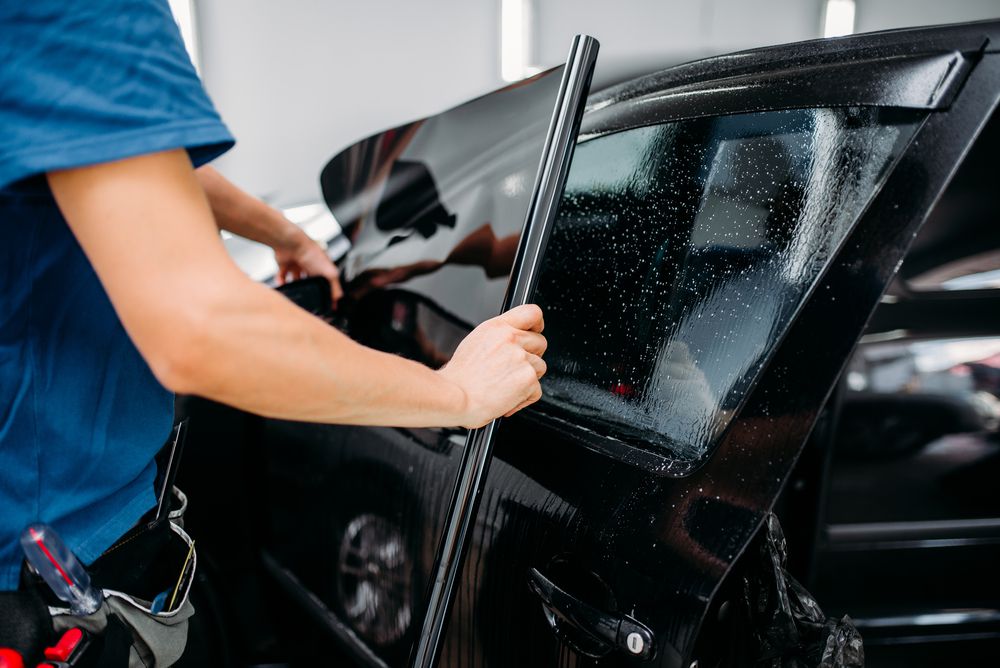 Applying dyed window tint on a customer's car.
Applying dyed window tint on a customer's car.
Advantages
- Dyed window tints are affordable, especially compared with other window tinting services.
- They offer a decent level of privacy.
- You can get different densities of dyed tints based on the darkness you want.
Disadvantages
- You get what you pay for — a dyed film tint will fade over time.
- It's overly susceptible to surface damage.
- It doesn't offer as much UV protection as other types of car window tints.
2. Metalized
Metalized window tints are quite the upgrade from dyed films.
They do a much better job of keeping UV rays and heat out.
However, they use reflection to do so.
Metalized tints contain metal particles that embed inside layers of film to help protect from UV exposure.
The metal particles also strengthen your windows, making shattering less likely.
You'll love a metalized window tint if you're looking for a shiny, mysterious look.
Plus, metalized tints are very scratch resistant, especially when compared with dyed tint film.
They're also far more efficient at blocking UV rays than a dyed tint, thanks to the infused metalized tint film.
But metalized tints do have downsides.
They can often wreak havoc on GPS, radio, and cell reception.
So, if you typically get lost and rely heavily on internet-based sat-navs, metalized tints may not be suitable for you.
Additionally, you'll pay much more for a metalized tint than a dyed version.
Advantages
- Metalized film efficiently protects against the sun's harmful UV rays.
- It protects your windows, making them shatter-resistant.
- A metalized tint is much more scratch-resistant than its dyed cousins, thanks to its metal particles.
Disadvantages
- They often interfere with radio, cell, and GPS signals.
- Metalized window tinting is more expensive than dyed window film.
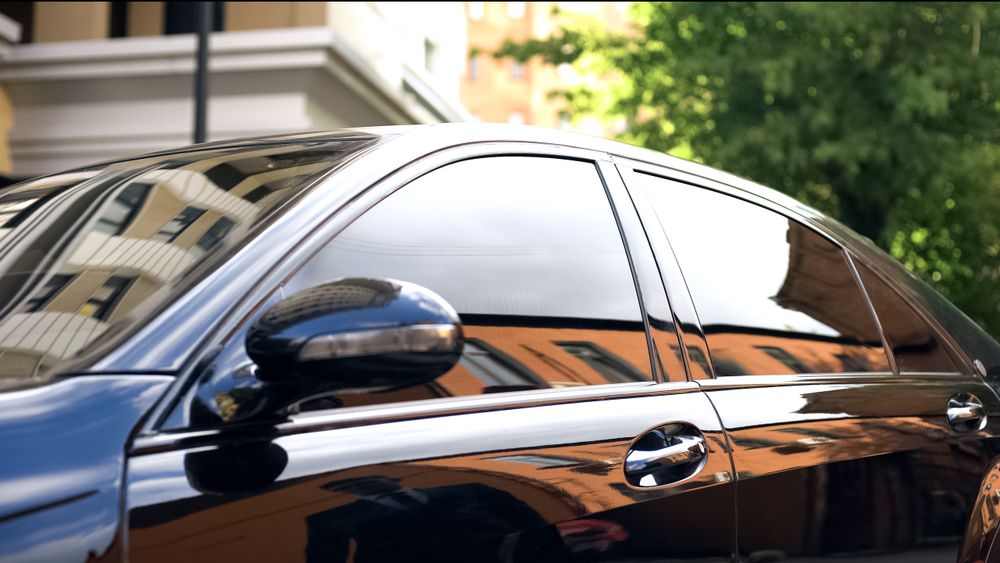 A technician applying window tint to a customer's car.
A technician applying window tint to a customer's car.
3. Hybrid
If you're looking for the best of both worlds, a hybrid car window tint could be your perfect match.
What Is Hybrid Window Tinting?
A hybrid tint is metalized tint films, and dyed tints rolled into a bespoke package.
It combines the dyed tints' affordability and privacy with metalized tints' protection from UV rays and strength.
Hybrid window tinting doesn't fade as quickly.
Plus, they are more scratch-resistant than a metalized car window tint.
That said, adding a hybrid window tint film to your car isn't cheap.
And the metal particles mean you suffer the same signal interference.
Advantages
- These window tints offer exceptional privacy.
- They're wonderfully strong.
- Hybrid window tints block heat and UV rays well.
Disadvantages
- You have to put up with the same signal interference as a metalized window tint.
- Hybrid window tint types are more expensive than the metalized or dyed options.
4. Carbon
Carbon window tints are for those who like a bespoke matte finish.
Think less overt spy and more undercover spy.
They're more tasteful than their metalized counterparts.
What Is Carbon Window Tint?
Carbon window tints are injected with exceptionally reflective particles of carbon.
Luckily, they won't fade over time and stop up to 40% of infrared light from touching your vehicle's interior.
So, they aren't just heat reflective; they're also insulating.
Therefore, a carbon tint will work just as well in winter as in summer.
Carbon car window tints are also more efficient at reflecting heat, meaning they're superior to dyed and metalized tints.
And they don't have signal-blocking problems.
Although, a carbon film is relatively expensive since it's a rarity.
Advantages
- Carbon tints are very insulating.
- They provide a matte finish, unlike other window tints.
- They're wonderfully effective against UV rays.
Disadvantages
- This type of window tint is costly.
5. Ceramic
A ceramic tint is the crème de la crème of window tinting.
It's the most expensive yet most effective type of car window tint.
Ceramic window tints are free from metal particles and dye.
They use ceramic particles instead, which are non-conductive, meaning they never block radio or cell signals.
However, the ceramic film will block those pesky UV rays!
These window tints surpass others regarding glare reduction, strength, and shatter- and scratch-resistance.
Despite their newness to the window tinting market, they've quickly become a firm favorite.
Choosing a ceramic tint gives you a massive UV ray reduction (it blocks up to 99% of harmful rays), ensuring your interior stays harm-free.
They also cut around 73% to 91% of solar heat while being resistant to fading.
And yes, their efficacy definitely makes up for their cost.
That said, ceramic tints are pretty difficult to remove, so you must be 100% sure about your decision before choosing this car window tint.
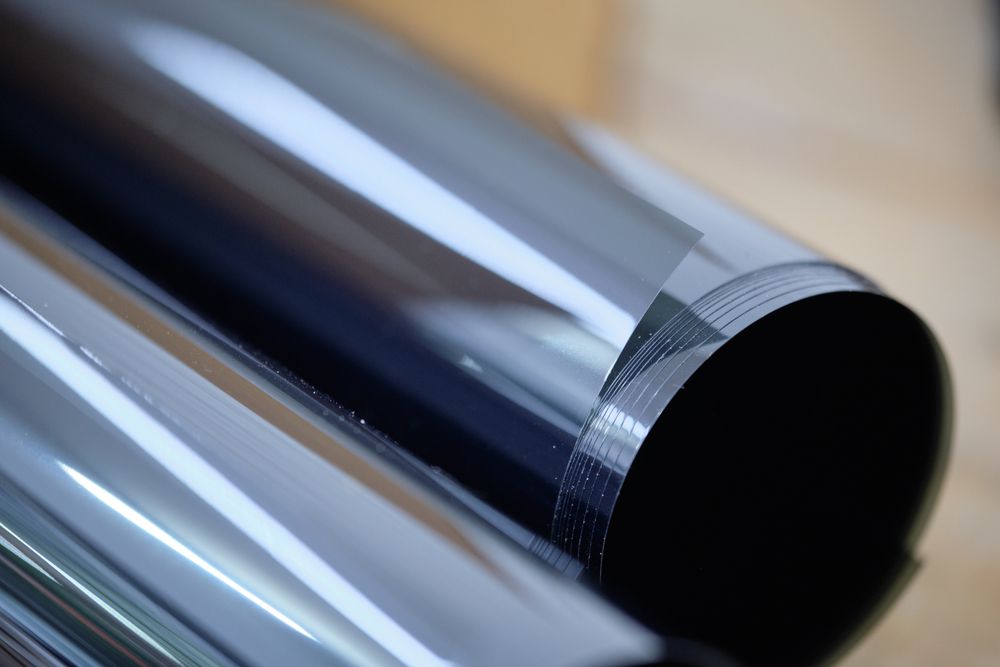 Rolls of ceramic window tint.
Rolls of ceramic window tint.
What Does Ceramic Window Tint Look Like? Does Ceramic Tinting Look Hazy?
Ceramic car window tints aren't shiny or reflective like metalized versions.
They're non-reflective.
However, the first few days after fitting ceramic window tints might be hazy.
This is normal and, most importantly, temporary.
After several days, ceramic tints reduce sun glare by 50%, improving your visibility while driving during the day and at night.
Advantages
- They effectively reduce glare and block heat.
- Ceramic window tinting reduces UV rays by up to 99%.
- They are one of the strongest types of car window tints.
Disadvantages
- They're the most expensive tint.
Other Tint Options
You can also get a crystalline or clear tint.
They're made of multiple thin layers that are almost perfectly transparent yet manage to block UV light and heat.
If you love the clear window look yet want to protect your car's interior from ultraviolet damage, crystalline tints are perfect.
Since it's transparent, some drivers doubt its efficacy, but they've undergone stringer testing to prove their effectiveness against heat and UV light.
Naturally, you don't get the privacy with a crystalline option.
You can find other types of car window tinting if none of these options work for you, including:
- Solar control window film — It reduces the level of solar heat entering your car.
- Reflective film — It's designed to reflect sunlight and heat, keeping your vehicle cool in hot climates.
- Frosted tint — It's usually applied to glass for decorative or privacy purposes.
- UV blocking film stops UV light and is typically mixed with other films for complete protection.
What Type of Window Tint Is Best?
Ultimately, the best window tinting for you depends on your budget.
Ceramic is regarded as the piece de resistance thanks to its quality and durability.
But because it's the most expensive option, it might not fit your budget.
Therefore, consider the following when choosing the best window tinting for you:
- Budget — We always recommend dyed tints if you're on a tight budget. You can always upgrade in the future.
- Style — Consider whether you want the "in" style. If so, choose carbon films. The matte look is all the rage at the moment.
- Longevity — Choose ceramic if you want it to last up to 15 years. However, metalized options can stay healthy for around ten years.
Conclusion
Dyed tints are the friendliest on your budget, but ceramic options will undoubtedly stand the test of time while ensuring the ultimate shatter resistance and UV protection.
But regardless of the tint type you choose, always enlist a professional's help.
They're well-versed in providing many window tinting services, ensuring you get the finish your vehicle deserves.
FAQs
What Is The Darkest Window Tint?
The darkest tint is 5%.
You can't see through it, and it's illegal in most states.
Despite that, you'll often see it on limousines and other private vehicles.
If your car comes with a factory tint, it'll sit between the 15% and 20% mark.
The latter is the best choice for privacy-purpose window tinting.
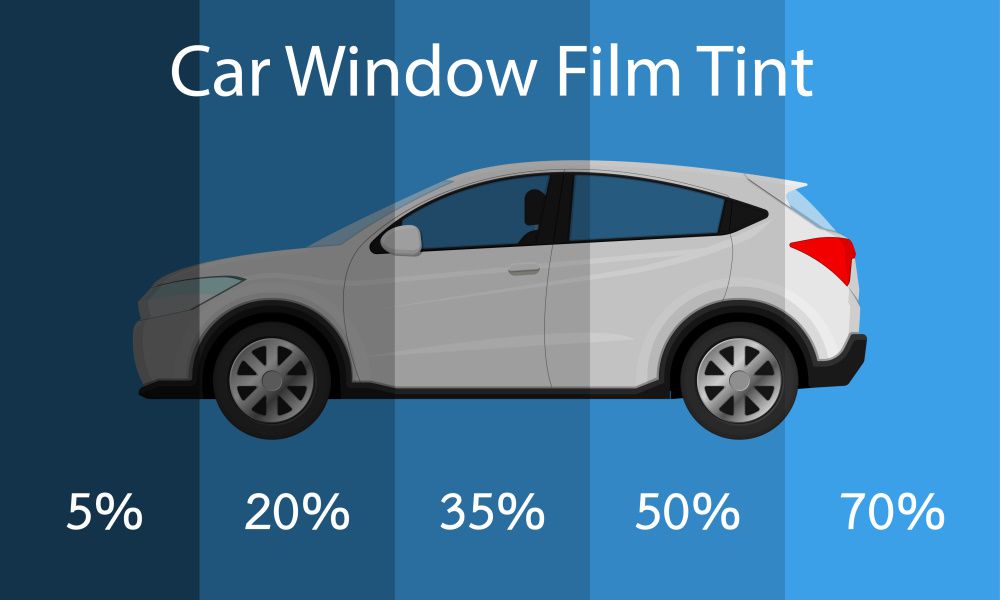 Car window tint grades.
Car window tint grades.
What Kind of Tint Is Only Dark on The Outside?
Ceramic tints are dark when viewed on the outside.
You can't see inside your vehicle, meaning your valuables are protected.
Which Tint Is Darker? Carbon or Ceramic?
Carbon tints are slightly darker in color than ceramic options because of their denser chemical construction.
However, they both offer the same heat rejection.
The tint won't grow darker, no matter how much ceramic is added.
How Can You Tell The Difference Between Ceramic and Regular Tint?
The most significant difference between a ceramic tint and a regular one is their heat and UV ray protection.
Ceramic is simply the winner when it comes to keeping your car cooler in the summer and warmer in the winter.
Plus, it won't interfere with GPS, cell, or radio signals.